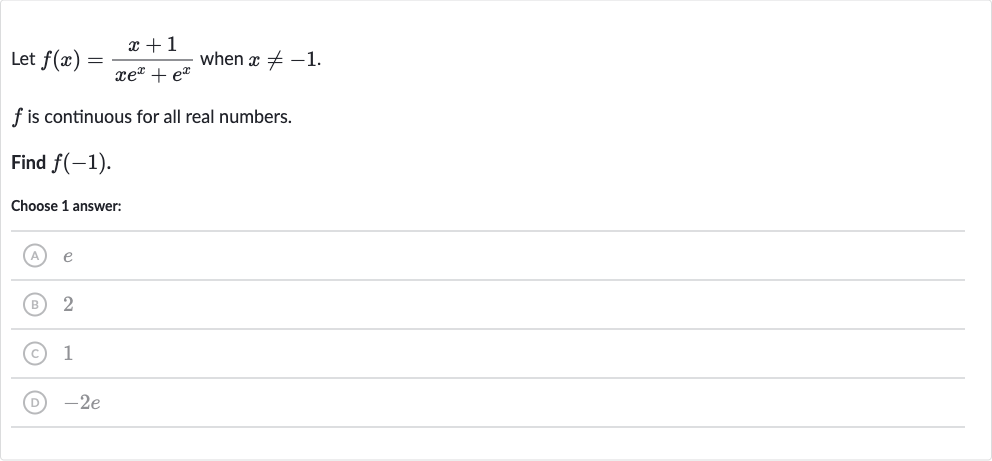Full solution
Q. Let when . is continuous for all real numbers.Find .Choose answer:(A) (B) (C) (D)
- Finding : We need to find the value of . However, we cannot directly substitute into the function because the function is not defined at . We will use the limit process to find the value of as approaches .
- Using the limit process: Let's consider the limit of as approaches :
- Applying L'Hôpital's Rule: We can see that if we substitute directly, we get , which is an indeterminate form. To resolve this, we can apply L'Hôpital's Rule, which states that if the limit of as approaches a value is an indeterminate form or , then the limit is the same as the limit of the derivatives of the numerator and the denominator, provided that the limit exists.
- Finding the derivatives: We will find the derivatives of the numerator and the denominator separately. The derivative of the numerator with respect to is . The derivative of the denominator with respect to is using the product rule and the fact that the derivative of is .
- Substituting : Now we apply L'Hôpital's Rule:
- Simplifying the expression: We substitute into the derivatives to find the limit:
- Final result: Simplify the expression:
- Final result: Simplify the expression:Since is the same as , we can rewrite the expression as:

